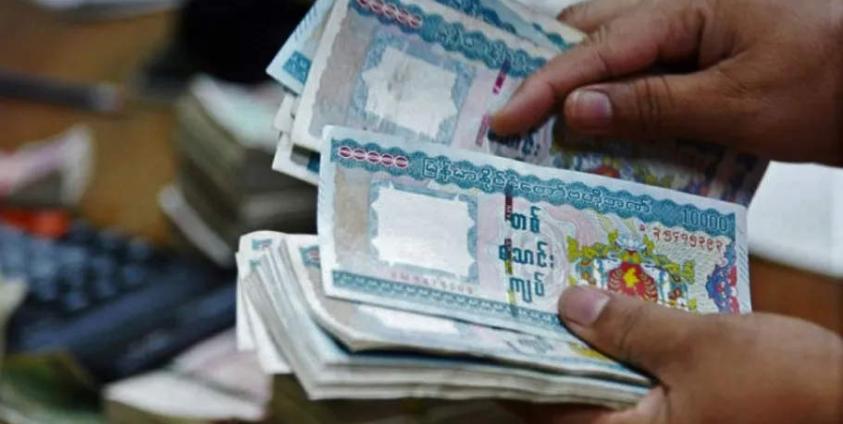

Payment Landscape in Myanmar (Part-1)
Brief History About Cash Dominance in Myanmar
Payment Landscape in Myanmar (Part-1)
Brief History About Cash Dominance in Myanmar
Cash transfers have been the major payment landscape in Myanmar for decades before cards and digital payments became popular. Myanmar was regarded as Asia’s final untapped market for credit cards. Myanmar, itself holds a great reason behind cash dominance for the last few decades. Around the 1990s, there was a significant political impact that led to the suspension of overseas investments, which prevented large American corporations like Visa and MasterCard from establishing themselves in the nation. In 2003, there was a major financial meltdown and the government restricted domestic banks from distributing credit cards in reaction to countermeasure the situation. On the contrary, few people had any familiarity with cards, and cash remained by far the most preferred payment type within the nation in the last few decades.
Cash transfers have been the major payment landscape in Myanmar for decades before cards and digital payments became popular. Myanmar was regarded as Asia’s final untapped market for credit cards. Myanmar, itself holds a great reason behind cash dominance for the last few decades. Around the 1990s, there was a significant political impact that led to the suspension of overseas investments, which prevented large American corporations like Visa and MasterCard from establishing themselves in the nation. In 2003, there was a major financial meltdown and the government restricted domestic banks from distributing credit cards in reaction to countermeasure the situation. On the contrary, few people had any familiarity with cards, and cash remained by far the most preferred payment type within the nation in the last few decades.


After reformation of the country in 2011, led to a significant political shift which favoured advanced payment systems. Regardless of political developments, Myanmar still had to face the challenges in shifting on to other forms of payments. Despite the use of digital payment systems, the internet penetration rate before 2013 was only 0.23%. This data indicates that the cash payment system is used for the majority of domestic transactions in the past few years. Furthermore, even though it is domestic, people have to pay extra service fees for long-distance transactions because there are no official remittance agents. Individuals are concerned because unlicensed brokers exploited them for long-distance transactions prior to 2017. In late 2019, Myanmar Digital Contents & Vas Association (MDCA) reported that total network coverage reached 96.1% of the whole country. This is sufficient to raise the rate of advanced payment transitions. In 2019, there were 645,000 e-commerce transitions nationwide, with the amount of card transition alone totaling USD 16.6 million. Despite the expanded network coverage, certain rural areas continued to face challenges, particularly where the major value chain for the agriculture sector of the country takes place.
Agriculture on the other hand is a key driver of Myanmar’s economy. Agriculture accounts for 30 – 40 percent of the country’s GDP, 66 percent of employment (32.5 million individuals). Numerous Fintech businesses are striving significantly to increase the accessibility and adaptability of agricultural financing for agricultural production, which could resolve a wide range of challenges. Although Myanmar has a high literacy rate ranging around 85%, the digital literacy in contrast is relatively inadequate. Even when advanced payments are available, they typically do not contain in the farmers’ major cash flow system. Cash had been the predominant instrument across the agriculture value chain since 2015, occupying around 5 millions cash transactions, valued at over USD 8 million. Since Myanmar farmers were influenced by the cash dominance for the past decade, they find it more convenient to use cash to make transitions across the nation and to the marketplaces. Despite the availability of other payment options, large pallets of cash are still transported and utilized as down payments for homes, cars, and crop-related necessities.
After reformation of the country in 2011, led to a significant political shift which favoured advanced payment systems. Regardless of political developments, Myanmar still had to face the challenges in shifting on to other forms of payments. Despite the use of digital payment systems, the internet penetration rate before 2013 was only 0.23%. This data indicates that the cash payment system is used for the majority of domestic transactions in the past few years. Furthermore, even though it is domestic, people have to pay extra service fees for long-distance transactions because there are no official remittance agents. Individuals are concerned because unlicensed brokers exploited them for long-distance transactions prior to 2017. In late 2019, Myanmar Digital Contents & Vas Association (MDCA) reported that total network coverage reached 96.1% of the whole country. This is sufficient to raise the rate of advanced payment transitions. In 2019, there were 645,000 e-commerce transitions nationwide, with the amount of card transition alone totaling USD 16.6 million. Despite the expanded network coverage, certain rural areas continued to face challenges, particularly where the major value chain for the agriculture sector of the country takes place.
Agriculture on the other hand is a key driver of Myanmar’s economy. Agriculture accounts for 30 – 40 percent of the country’s GDP, 66 percent of employment (32.5 million individuals). Numerous Fintech businesses are striving significantly to increase the accessibility and adaptability of agricultural financing for agricultural production, which could resolve a wide range of challenges. Although Myanmar has a high literacy rate ranging around 85%, the digital literacy in contrast is relatively inadequate. Even when advanced payments are available, they typically do not contain in the farmers’ major cash flow system. Cash had been the predominant instrument across the agriculture value chain since 2015, occupying around 5 millions cash transactions, valued at over USD 8 million. Since Myanmar farmers were influenced by the cash dominance for the past decade, they find it more convenient to use cash to make transitions across the nation and to the marketplaces. Despite the availability of other payment options, large pallets of cash are still transported and utilized as down payments for homes, cars, and crop-related necessities.

Late in 2019, when the pandemic started to spread across several nations, e-commerce surged. The payment methods are obliged to advance in correlation to the e-commerce bloom. Due to the risk to health posed by cash, Myanmar has been obliged to convert the majority of its payment systems to digital ones. Despite the advancements in payment methods across the nation, some consumer behaviours persist, such as the refusal to pay additional service charges for online purchases and choosing cash on delivered service still persists more than digital transferring. However, according to MDCA, Covid-19 encourages 57% of internet users to peruse online stores. The growth of e-commerce and outside variables like covid and politics has increased the rate of digital adoption in the banking and e-commerce sectors of Myanmar.

These aspects urge Myanmar to switch to a digital payment system that is gradually replacing its current one. Although the predominance of cash has impacted customer behavior, many advanced payment systems have been introduced by multiple Fintech businesses. They have been providing information on how to conduct digital transactions in easy-to-understand methods to the individuals in Myanmar. In terms of payment systems, Myanmar is currently in its transformational phases. This article (Part 1) discussed about how the dominance of cash has an adverse influence on consumer behavior during the transformation era of Myanmar. Please stay tuned for part 2 of this article to find out about more information on other advanced payment options that people can use to completely skip cash in the near future.

Late in 2019, when the pandemic started to spread across several nations, e-commerce surged. The payment methods are obliged to advance in correlation to the e-commerce bloom. Due to the risk to health posed by cash, Myanmar has been obliged to convert the majority of its payment systems to digital ones. Despite the advancements in payment methods across the nation, some consumer behaviours persist, such as the refusal to pay additional service charges for online purchases and choosing cash on delivered service still persists more than digital transferring. However, according to MDCA, Covid-19 encourages 57% of internet users to peruse online stores. The growth of e-commerce and outside variables like covid and politics has increased the rate of digital adoption in the banking and e-commerce sectors of Myanmar.

These aspects urge Myanmar to switch to a digital payment system that is gradually replacing its current one. Although the predominance of cash has impacted customer behavior, many advanced payment systems have been introduced by multiple Fintech businesses. They have been providing information on how to conduct digital transactions in easy-to-understand methods to the individuals in Myanmar. In terms of payment systems, Myanmar is currently in its transformational phases. This article (Part 1) discussed about how the dominance of cash has an adverse influence on consumer behavior during the transformation era of Myanmar. Please stay tuned for part 2 of this article to find out about more information on other advanced payment options that people can use to completely skip cash in the near future.